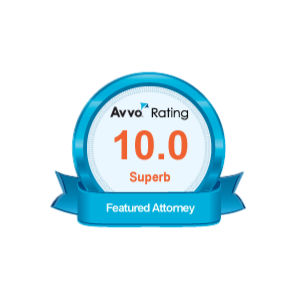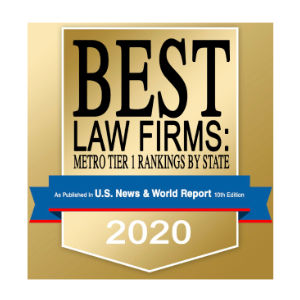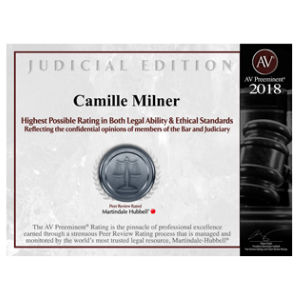
For Corporate CEOs and other High-Ranking Corporate Executives, Privacy is usually their highest priority in their divorce for a number of reasons:
- If their deposition is taken or corporate records are subpeonaed, that could compromise their company secrets, intellectual property, and send panic through the company ranks that something is “coming down” that will adversely affect the company;
- If competitors know they are in a contentious divorce, those competitors can take advantage of that in a host of ways, to the detriment of the company;
- If their company is for sale, and most companies are, if the time and price is right, a divorce of a corporate executive can put a hold on a sale or slow down the closing of a sale or the distribution of the proceeds, adversely affecting other corporate officers and causing animosity between the divorcing corporate officer and his or her other corporate officers.
Chief Executive Group in its article Protecting the Executive and the Company, recently highlighted the concerns and dangers for Chief Executives and other high ranking executives when they are faced with a divorce.
In handling both litigation and Collaborative Divorce cases, I have been able to witness the difference in how those concerns are handled. In litigation, hearings must be had to protect company secrets, but even if there is a Order from the Court to protect those company secrets, depositions and other aspects of the discovery process are at risk of being found out by the public, including the company’s competitors, who can use that information in a myriad of ways. And sadly, sometimes, it is even a bitter spouse who leaks those company secrets.
In the Collaborative Divorce Process, there is no formal discovery, so there are no depositions, written questions, or requests for documents.
This information is gathered informally and with confidentiality agreements. In a Collaborative Divorce, both spouses understand that it behooves them and their children, if they have children, to have the company’s secrets protected. An agreement between spouses to protect the company’s information carries much more weight with the parties than even a Court Order because, in the Collaborative Process, the parties are educated about and understand the importance of protecting their joint interest in the company and the company’s information.
In fact, in the Collaborative Divorce Process, the divorce itself can be handled in many creative ways, such as not filing the case until the settlement is reached and the terms of the settlement itself can be set out in a document called an Agreement Incident to Divorce, which is not ever filed in the divorce file at the courthouse.
Some counties previously required that AIDs (Agreement Incident to Divorce) be filed in the district clerk’s file, but in the last Texas legislative session, the legislature passed a law that enables the AID to NOT to ever be filed so long as it is incorporated by reference in the Decree of Divorce. AIDs can be used in either litigation or Collaborative Divorce, but I have found that, in a Collaborative Divorce, parties are more interested in using this document to protect their private matters. This makes using an AID to protect the parties’ and company’s private information a HUGE asset.
There are many other techniques, and examples of case studies, where using the Collaborative Divorce Process is the best option for corporate executives, officers and directors.
One example was a case where the CEO did NOT want a business appraiser digging into the corporate offices because it was a small company where everyone pretty much knew what was going on. This business owner felt that this would make the other corporate officers and employees nervous that something bad was happen with the company and possibly leak that to competitors or affect the health of the company in other ways. If the Court had ordered a business appraisal, it typically would not have been customized to protect this CEO’s fear from being realized.
By handling this matter in the Collaborative Divorce Process, the appraisal was customized, by agreement of the parties, so that it could be managed with a minimal number of people in the company knowing that it was even happening and so the CEO’s fear was averted.
In that case, the CEO, as are many owners of businesses, that the appraisal would come back so high that that owner could not be able to fund the buy-out of spouse’s interest in the company. Business owners naturally believe their businesses have high value. In litigation, usually each party has their own business appraisal done and then the appraisers testify in Court about their findings, including the strengths and weaknesses of the company. Just imagine what a competitor could do with that information.
In the Collaborative case mentioned above, the parties worked together with the business appraiser and when the appraisal was complete, the methodology of it was explained in a meeting with the parties and their attorneys so that everyone could understand and accept it. If the parties (or either party) had not been happy with the appraisal, they could get another appraisal and even have the two appraisers work together to come up with an acceptable value to them. But obviously, with just one appraiser or even more than one, if they are working together instead of testifying in a duel in Court, that will save large professional fees for the clients and their community estate.
In this particular case, the appraised value of the business came out lower than the owner expected, but the competition never needed to know that, and for the purposes of the divorce buy-out, this delicately handled process enabled the parties to privately reach a satisfactory agreement and both parties (and the company) were financially healthy at the end of the divorce.
If you or someone you know, especially a CEO or corporate officer or director of a closely held or publicly traded company, is facing divorce, please have them talk to a Board Certified Family Law trained and experienced in the Collaborative Divorce Process.











